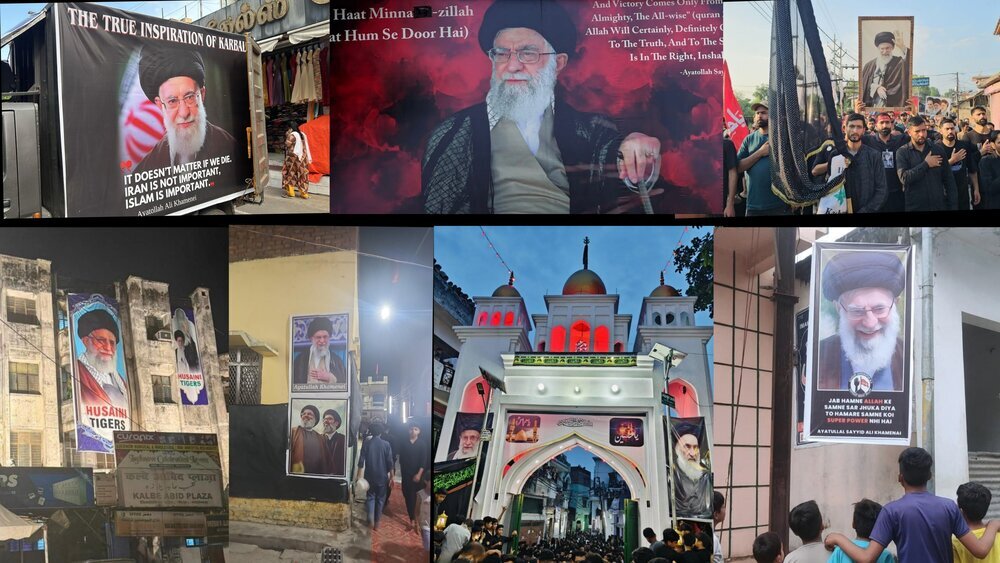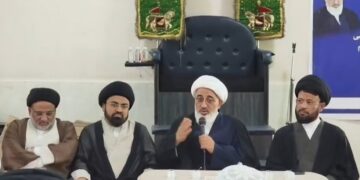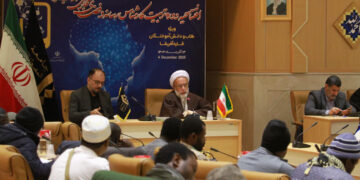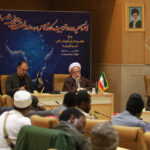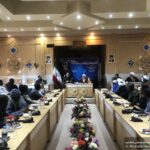This year’s commemorations stood out for the widespread presence of the blessed flag of Imam Hussein (AS) and the striking display of portraits of the Supreme Leader of the Islamic Revolution, Ayatollah Seyyed Ali Khamenei. These images, carried with visible love and reverence, symbolized the deep spiritual and ideological connection between the Indian mourners and the leader of the Islamic Revolution. Their display also conveyed support for his guidance and steadfast adherence to the values he upholds.
In addition to Ayatollah Khamenei, images of other revered figures, particularly Grand Ayatollah Sayyid Ali Husseini Sistani, featured prominently in the processions. This reflected the deep respect and affection held by the Indian Shi’a community for these religious authorities.
Another significant aspect of this year’s Ashura commemorations was the visible presence of portraits of the late martyr and resistance icon Sayyid Hassan Nasrallah. His image served not only as a symbol of devotion but also as a representation of the spirit of Islamic awakening, resistance, and unwavering opposition to global injustice and arrogance. The participation of such symbols indicated a high level of political and religious awareness among the mourners, resonating with the revolutionary ideals of Ashura.
Beyond the commemoration of the Karbala tragedy, this year’s ceremonies in India served as a platform for expressing unity, awakening, and empathy with the oppressed across the globe. Through slogans, placards, and evocative visuals, participants renewed their allegiance to the ideals of Imam Hussein (AS) while voicing solidarity with the contemporary resistance front.

